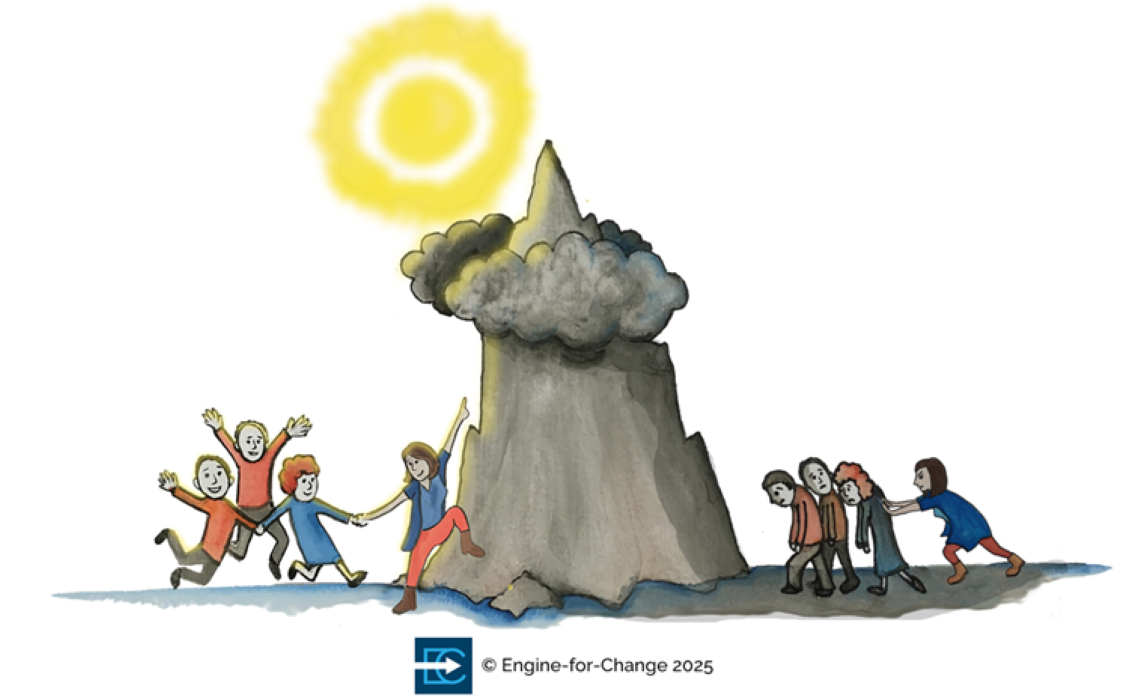Physical layout of the organisation is extremely important, and as we saw in part one, it can create tensions and biases which translate into an ‘us vs them’ or ‘upstairs/downstairs’ mentality. Once the physical and unconscious silos are broken down, there is usually a bit more ease in the organisation which fosters collaboration, organisational citizenship, job satisfaction, productivity and all the things workplaces need to be proactive and react swiftly to changing market conditions. Change initiatives also have a better chance at being successful.
When implementing change in organisations that would have previously suffered from the ‘upstairs/downstairs’ mentality, it is important that those managing and leading the initiative implement tactics that would not allow regression to this biased state. Failure to give due consideration could undo months and sometimes years of work that was invested into breaking down silos and tensions among various groups.
Leaders of change should consider the following when implementing change initiatives:
- Employee involvement – Include employees from various levels in the organisational hierarchy in the change initiative, so they can give input within their area of expertise and be included in
 a cause that directly affects their role. If employees feel that change is being done to them, and they are not required to give input, feelings of ‘us vs them’ could easily resurface. A software implementation at a Manufacturing plant in the Americas, where warehouse clerks, laboratory technicians, plant engineers, operations and accounts staff were involved in providing feedback on an enterprise-wide manufacturing solution and training materials, yielded successful adoption of the solution. Many individuals received accolades from Senior Management for their ideas and subject matter expertise, and some staff from the plant were even motivated to pursue further qualifications in supply chain management. It was a pleasure to see individuals in suits, overalls, and protective gear show up for meetings and collaborate with intensity and purpose towards a common goal. Everyone had a vested interest, and even though biases resurfaced at times, key stakeholders were quick to resolve and promote unity within the team.
a cause that directly affects their role. If employees feel that change is being done to them, and they are not required to give input, feelings of ‘us vs them’ could easily resurface. A software implementation at a Manufacturing plant in the Americas, where warehouse clerks, laboratory technicians, plant engineers, operations and accounts staff were involved in providing feedback on an enterprise-wide manufacturing solution and training materials, yielded successful adoption of the solution. Many individuals received accolades from Senior Management for their ideas and subject matter expertise, and some staff from the plant were even motivated to pursue further qualifications in supply chain management. It was a pleasure to see individuals in suits, overalls, and protective gear show up for meetings and collaborate with intensity and purpose towards a common goal. Everyone had a vested interest, and even though biases resurfaced at times, key stakeholders were quick to resolve and promote unity within the team.
- Have meetings with members of the change team in neutral locations and on different floors in the organisation – This tactic will keep the focus on the initiative and away from past biases. In addition, confidentiality of discussions and access to visual aids may limit meeting space options but Change Leads can be creative and use training rooms or empty offices that are big enough to seat everyone. Secret meeting spaces or sticking paper to the inside of glass offices to create privacy could raise suspicion and cause gossip, so try to avoid having meetings in secret spaces as they eventually become public knowledge, and choose comfortable, appropriate locations that do not promote division and feelings of exclusion among the other staff.
- Communicate horizontally and vertically – Ensure that there is initial and continuous communication about the change, else staff may feel left out and revert to the ‘us vs them’ mentality.
 The rule of thumb as outlined by many texts on Change Management is that Senior Management or the Sponsor should deliver the initial communication about the change to all staff and Line Management should provide more in-depth insights and continuous updates to their subordinates. Furthermore, ensure that there are trained and an adequate number of change champions on all floors and across all locations to communicate the change and motivate staff. This ensures that all employees are represented and could be reached on a peer level. As well, the combination of communication from Management and the ordinary worker, which is a change champion, also sends a strong message of inclusion, cohesion and teamwork among individuals from different levels in the hierarchy and locations in the organisation, and banishes thoughts of ‘us vs them’.
The rule of thumb as outlined by many texts on Change Management is that Senior Management or the Sponsor should deliver the initial communication about the change to all staff and Line Management should provide more in-depth insights and continuous updates to their subordinates. Furthermore, ensure that there are trained and an adequate number of change champions on all floors and across all locations to communicate the change and motivate staff. This ensures that all employees are represented and could be reached on a peer level. As well, the combination of communication from Management and the ordinary worker, which is a change champion, also sends a strong message of inclusion, cohesion and teamwork among individuals from different levels in the hierarchy and locations in the organisation, and banishes thoughts of ‘us vs them’. - Providing adequate training to staff so no one feels left out – Individuals in workplaces have different aptitudes and these should be catered to by providing adequate training, materials such
 as manuals or crib sheets and additional one to one sessions if required. Providing additional help in a non-judgemental way especially to those who consider themselves as ‘average’ and having ‘basic formal education’ will ensure greater adoption of the change, good feelings as everyone’s needs would be catered to and a positive work environment.
as manuals or crib sheets and additional one to one sessions if required. Providing additional help in a non-judgemental way especially to those who consider themselves as ‘average’ and having ‘basic formal education’ will ensure greater adoption of the change, good feelings as everyone’s needs would be catered to and a positive work environment. - Provide equal benefits – Individuals working on change initiatives from different roles and levels in the organisational hierarchy should be treated equally fair. If late nights and
weekly workshops are a requirement, consider purchasing food in the same price range for all levels of staff. If Senior Management gets the lobster and ordinary staff gets a basic sandwich, feelings of inequality will resurface. Additionally, providing a taxi for those who take the bus home after a late evening session or implementing a carpool, would lessen residual tensions, promote good feelings overall, productive and collaborative change sessions and work environment.
feelings of inequality will resurface. Additionally, providing a taxi for those who take the bus home after a late evening session or implementing a carpool, would lessen residual tensions, promote good feelings overall, productive and collaborative change sessions and work environment.
These tactics may be considered quite generic, that any Change Lead would have as part of their arsenal, but one communication lapse, the appearance of a biased lunch, an oversight in the training plan where adequate training was not provided to individuals with basic formal education, or failure to include relevant staff from all roles, levels and locations, can cause old biases and tensions to resurface. Naysayers may then quickly reappear and create a bandwagon effect, thus reverting the organisation to ‘us vs them’ or the ‘upstairs/downstairs’ mentality.
Leaders of change must therefore be flexible, vigilant, use reflection and active listening to determine if they are falling short and run the risk of making old tensions resurface while implementing change. This would not only jeopardize the current change initiative but all the hard work that has gone before. Giving consideration and paying close attention is more work and can be time consuming, but if done correctly and the right tactics are implemented, further healing could take place individually and corporately, with the organisation being better able to cope with and implement change successfully.







